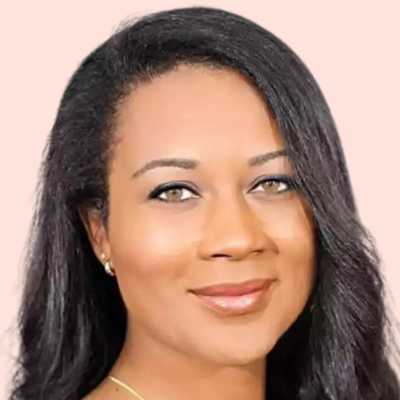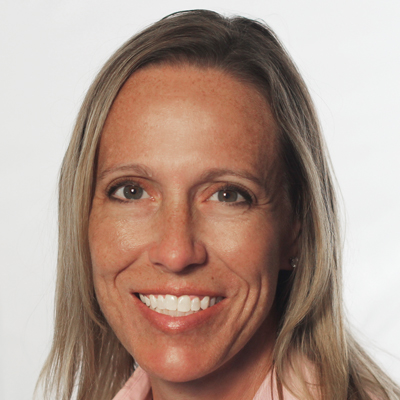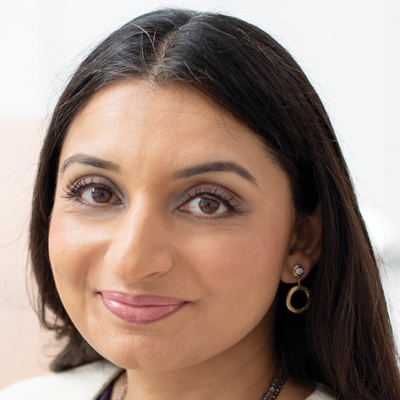The Many Facets of D&I
Best Practices for Building a Diverse and Inclusive Insurance Workforce
Insurers are implementing companywide initiatives, employee resource groups, recruiting and internship programs and community outreach to create a diverse, inclusive workplace culture and heterogeneous workforce.
- Lori Chordas
- November 2021
-





As COVID-19 continues to drive business operations changes and reshape the future of work, it's also sparking new conversations about diversity, equity and inclusion in the workplace.
Even before the start of the pandemic last year, insurers were busy rolling out new programs aimed at building a heterogeneous workforce. But since the rise of COVID-19, along with last year's nationwide protests and civil unrest sparked by police killings of George Floyd, Breonna Taylor and other Black Americans, there's now an even greater focus and attention being placed on diversity and inclusion initiatives, and “everyone is more attuned to different dimensions of diversity and difference in the workplace,” said Vicki Walia, the chief talent and capability officer at Prudential Financial.
Walia was part of a panel of industry employment leaders who recently met with AM Best TV to discuss best practices insurers use to build a diverse and inclusive staff and leadership team. The panel also included Laura Boylan, senior vice president of human resources at Philadelphia Insurance Cos., and Kesa Edwards, who helps oversee Farmers Insurance's enterprise implementation of diversity and inclusion initiatives.
Following is an edited transcript of the discussion.

We need to be realistic and meet people where they are to ensure everyone feels invested in steering the journey rather than just being a passenger along for the ride.
Kesa Edwards
Farmers Insurance
How has the focus on DE&I in the workplace changed over the past several years?
Boylan: Today, there is a heightened awareness and focus on diversity, equity and inclusion as a business strategy. In the past, it was easy to say DE&I was important but now it's about the tangible steps companies are taking to embed it into their organizations. There's also greater transparency and open communication about DE&I topics.
What D&I initiatives have your companies implemented to remain competitive and meet the needs of evolving workplace dynamics and expectations?
Edwards: Farmers has had a longstanding commitment to diversity and inclusion, which serves as the foundation of our culture and has helped guide our organization in its broader mission of making a difference in the communities in which our employees live and work. We have been on a D&I journey to live our values for many years, and one of those values is to respect the diversity and potential of every individual and empower employees to be their true selves at work.
We have nine active employee-led employee resource groups across the country, including Farmers Asian Alliance and Farmers Pride. Those groups help us advance our commitments to fostering a dynamic work environment, and support the business by working on recruitment initiatives, retention, career development and more. We also provide diversity and inclusion training that allows employees to embrace their own uniqueness and identify ways to help others feel comfortable doing the same.
Boylan: Diversity, equity and inclusion have always been top priorities at PHLY but recently we recognized that in order for us to make an impactful change, we needed to put a two-prong plan in place that focuses both on short-term and long-term approaches. In the short term, we are building foundational skills across the organization and expanding our internal diversity training courses in areas such as conscious inclusion and inclusive leadership. We have also developed a partnership with INROADS, a nonprofit that creates pathways to careers for ethnically diverse students, where we hire several students each year to take part in our summer internship program. Longer term, we're focusing on incorporating a diversity council that represents all business units across the organization, creating DE&I accountabilities across the company and not just in HR. This council is working to develop goals and actions that support impactful changes and will work with respective stakeholders to achieve them.

It’s important to also come up with ways to support and unleash the potential of your internal teams and make sure they have access to opportunities that support their career goals.
Laura Boylan
Philadelphia Insurance Cos.
Has COVID-19 made diversity and inclusion issues in the workplace more apparent?
Edwards: The pandemic has helped to accelerate some of the trends already underway before COVID-19. It has also challenged us to work together in new ways. Many people have spent considerable time over the course of the pandemic identifying what's really important in their everyday lives and to their long-term career goals. What we've seen over the past 18 months is that diversity and inclusion has emerged as a reinvigorated priority to current and potential employees, our leadership team and our organization's continued success in the long term.
Walia: I agree, the pandemic has definitely changed the story around D&I initiatives. But what has also really changed the conversation on [DE&I] were last year's killings of Breonna Taylor and George Floyd. Before that, our efforts were always prioritized, but I think there is now an understanding that we need to do something bigger and bolder.
Have the deaths of George Floyd and Breonna Taylor sparked growing conversations about issues related to racism and inequality?
Edwards: At the time of George Floyd's death, I was leading one of Farmers' largest employee resource groups—the Black Professionals Alliance. I came into work the following day and was mentally shaken. At that time, race wasn't a topic commonly talked about and we weren't quite sure how to bring up the topic to our leadership team. I was drafting an email to Farmers CEO Jeff Dailey and the alliance's executive sponsor and was stuck on how to ask for help in bringing awareness to our Black professionals. At that moment, our CEO and the executive sponsor reached out to me to see how they could help our employees and the alliance. The following day, Jeff Dailey and I shared a joint message and an open letter to Farmers' employees starting an important dialogue around the issue of racism and committing Farmers to standing up for what's right.
Last year's events sparked a broader discussion and reflection on our D&I efforts, leading us to ask, “What more can we be doing?” Over the past 14 months, with the support of our leadership team and our employee resource groups, we have had regular dialogues within the organization where our employees can listen, learn and feel empowered to take action. We've also developed enterprise-wide initiatives around talent diversity in our supplier relationships.
How are growing conversations about issues related to racism and inequity transforming workplace culture today?
Edwards: It's been a huge cultural shift in the way that we talk about diversity and inclusion internally, with more dialogue also around issues occurring outside the walls of Farmers and how they impact our employees, especially as it relates to mental health. Since last summer's events, we've continued to communicate openly and transparently with our employees about our commitments. We do this through hosting employee-wide virtual conversations about race. We're also spurring new ideas and strategies to enhance our diversity in sourcing talent in our organization and the broader community. Last year, our CEO became a proud signatory of the CEO Action for Diversity & Inclusion, which is the largest CEO business commitment to diversity and inclusion in the workplace. As part of that commitment, he pledged to cultivate a workplace where diverse perspectives and experiences are welcome and respected and where employees can feel comfortable and empowered to discuss diversity and inclusion.

If you diversify leadership, they will begin diversifying their teams.
Vicki Walia
Prudential Financial
What can companies do to recruit and expand their diversity teams and promote more minority leaders?
Walia: As a society, we still tend to have very traditional ideas of what leadership is. We need to start by breaking down that leaders can look and act very differently than traditional leaders. You do that by having role models that you can look up to and say, “They are doing it differently and they are great at it.” Three years ago, Prudential set its first diversity commitment which was around how to diversify the ranks of our senior leadership. We tied executive compensation to it because we believe what you measure is what gets done and that should be rewarded. We met our goals because we recognized that this was important and had broad-based accountability for all of our leaders. Not only did we diversify our leadership ranks but also diversified the next level. If you diversify leadership, they will begin diversifying their teams.
Boylan: It's important to also come up with ways to support and unleash the potential of your internal teams and make sure they have access to opportunities that support their career goals. Continue to build those teams internally because they are just as important as bringing in some of that external talent. From the external talent standpoint, there are some traditional ways of recruiting and picking different types of universities and tapping into different populations that may not naturally be responding to or seeing your efforts to attract talent. It's trying to be innovative as well as tapping into talent early on so that, as young adults are making decisions about future career pathways, they begin to think about our industry.
What challenges currently exist around diversity and inclusion in the workplace and what's needed to overcome those challenges?
Walia: Insurance is an industry that values longevity and there's a premium put on the longevity of our talent. One of the things we have to balance with that longevity are the demographics and their skills base. Today, the half-life of skills is four to five years. There becomes this push to refresh the talent pool, but that pool doesn't exist in the market. How do you work with the talent pool you already have? How do you simultaneously diversify that talent pool from both a demographics and skills perspective? That's the fine balance we're all trying to walk right now.
Edwards: One of the challenges I now see is finding the right balance between prioritizing diversity and inclusion initiatives with many other pressing business objectives and getting everyone on board. We know there's much work to be done, so that can be challenging to decide where to start and how to keep the momentum going. But we also recognize that progress won't happen overnight.
We need to be realistic and meet people where they are to ensure everyone feels invested in steering the journey rather than just being a passenger along for the ride.
How do you see the insurance workplace evolving in the coming years, and what will companies need to do to increase their focus on diversity and inclusion to embrace the changing workforce?
Boylan: That's something we all continue to think about and discuss. The increase in digitization, remote workforces and other factors are things we now have to consider. The pandemic has impacted positively or perhaps challenged diversity and inclusion efforts but it's also changed the workplace.
Many of us haven't fully made our way back to the office yet. What's the workplace going to look like in the next 12 to 24 months, and what's the employee experience going to be in that workplace? I'm not sure we know those answers yet, but I have a lot of questions that we're talking about now to help provide some of those answers.
Edwards: The demographic, technological, social and economic changes happening in society at large will influence the workforce in the future. As our current employees, external talent pool and customer base become more diverse, we need to keep evolving to meet the changing needs and the expectations they have for employers that they want to work with. We know those needs and expectations will change over time, and we have to keep up with them. At Farmers, we are focused on building the kind of agile and adaptable culture that can be nimble to adjust to the rapidly changing demands of the marketplace. We view this as an obligation to challenge our own assumptions of what's possible. If there's anything that the pandemic has taught us it's that we are more adaptable than we think.
AM Best TV
Go to www.bestreview.com/d-i to watch the full lineup of programs in The Many Facets of D&I.